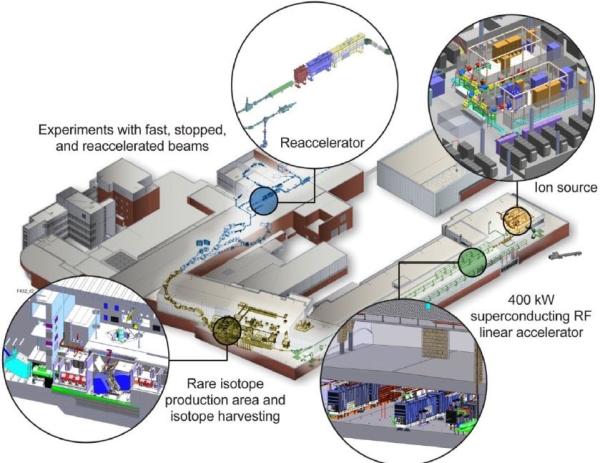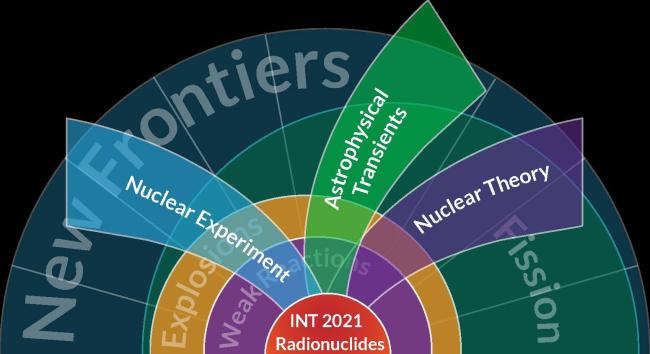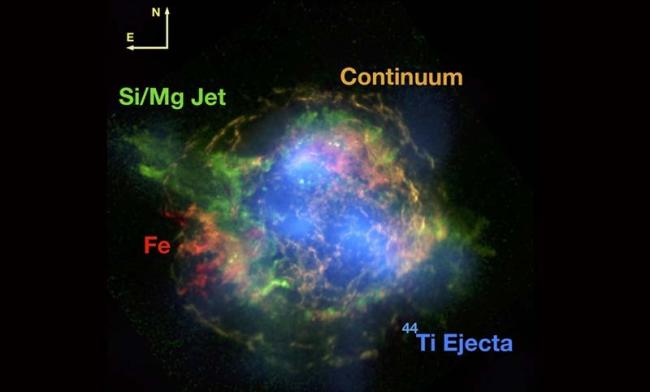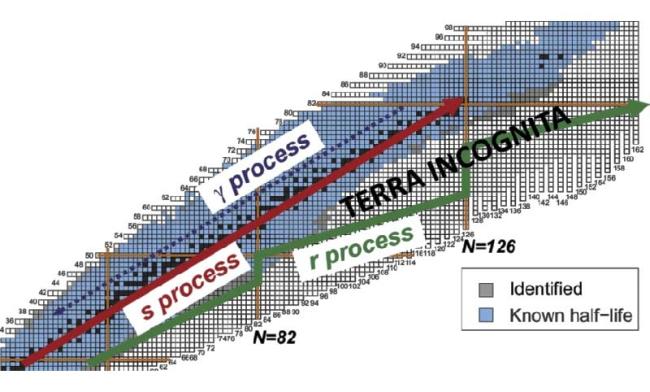Radionuclides: Nuclear Physics, Astrophysical Models, and Observations

Note to applicants: This is a "hybrid" program meaning there will be a combination of virtual and in-person participants. In the COMMENTS section of the Application Form, please write [In-person], [Virtual], or [Either] to reflect your preferred mode of attendance. Please be aware that all In-person participants must show proof of vaccination against COVID-19 upon arrival to the INT.
Disclaimer: Please be aware that due to ongoing concerns regarding the COVID-19 pandemic, this program may be changed from a hybrid program to online only.
The last day to submit an application for this program was Friday, August 27th.
We are entering an era where the physics of astrophysical transients ties together new advances in nuclear physics (both theory and experiment) and next-generation, high-energy astrophysics experiments. Rapid advances in this multi-disciplinary field have been inspired by new discoveries (e.g., merging neutron stars, r-process origin sites, gravitational waves, 3D imaging of young supernova remnants) that have led to an increased understanding of a wide range of relevant fields: stellar evolution, engines behind astrophysical transients, gamma-ray astronomy, dense nuclear matter, neutrino physics, and nuclear masses, cross-sections, and reaction rates. MeV gamma rays provide a unique probe of nuclear processes in astronomy, directly measuring radioactive decay, nuclear de-excitation, and positron annihilation. This program will bring together astronomers, astrophysical modelers, nuclear theorists, and nuclear experimentalists to fully explore the potential of next generation of gamma ray observatories, including building explicit links to the experimental programs at radioactive beam facilities such as the upcoming Facility for Rare Isotope Beams.
Goals of the Program
The broad plan of this program are to (1) build a community of scientists that have an advanced understanding across all of these subfields; and (2) accelerate scientific progress at the intersection of nuclear physics, astrophysical models, and high-energy observations. The key goals of our proposed program include:
-
Determine the key uncertainties (e.g., mixing, nuclear rates, etc.) behind the production of long-lived radioactive nuclei produced in stars (e.g. 60Fe, 26Al). Determine the crucial experiments or theoretical studies can reduce the known errors. Determine which measurements, or proxies, can improve our understanding of these isotopes.
-
Determine the role of improved dense nuclear matter and neutrino physics plays on radionuclide yields from explosive transients. Develop models to determine the range of possible yields from the innermost ejecta focusing on radioactive nuclei such as 56Ni and 44Ti.
-
Better quantify the yields and their uncertainties from neutron star mergers and other rprocess sites, leveraging the physics learned from GW170817. Multiple meetings have already been devoted to GW170817 and the r-process from neutron star mergers. This proposal will focus on the nuclear physics uncertainties and their effects on the yields that will affect the gamma-ray emission from these events. The exact topic of this portion will depend on the conclusions and directions of the meetings that occur between now and the onset of this program.
-
Determine the criteria for the next generation gamma-ray missions to maximize what we can learn from explosive events and progenitors, for example, by suggesting key experiments for the Facility for Rare Isotope Beams.
Organization
Because the primary goal of this program is to facilitate an integration of nuclear physics, astrophysical models, and high-energy astronomy observations every week. Every morning will consist of a 30-minute talk + 30-45 minutes discussion focused on reviewing the state of the art in a particular topic. These talks will preferentially be led by early-career scientists. A sub-group of the attendees will be tasked to lead an all-hands afternoon discussion tying the topic of the morning to the broader themes of the program. We expect that, over the course of a week should cover all of the major themes of the program.



